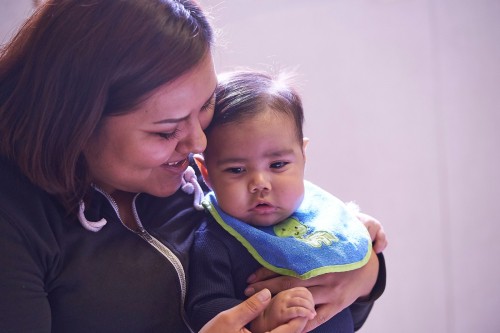
Haemophilus influenzae is an important bacterial pathogen that can cause a broad spectrum of disease ranging from conjunctivitis to meningitis. Historically, H. influenzae serotype b (Hib) was the most common cause of bacterial meningitis in children in the United States. Certain populations were at higher risk of serious Hib disease. The Navajo and White Mountain Apache tribes in the Southwestern United States experienced rates of Hib disease ranging from 152-254 cases per 100,000 children younger than 5 years of age, compared with rates of 45-60 per 100,000 children younger than 5 years of age in the general US population.
The Navajo and White Mountain Apache tribes were involved in proving the immunogenicity and safety of the Hib vaccine. As a result of this work, every country in the world has made uses the Hib conjugate vaccine. Since the introduction of Hib capsular polysaccharide-protein conjugate vaccine for young children in 1990, the incidence of invasive Hib disease has declined dramatically in the United States and other countries where these Hib conjugate vaccines are extensively used. Recent data from the Centers for Disease Control and Prevention (CDC) shows that the incidence of invasive Hib disease has decreased by 99% to less than 1 case per 100,000 children younger than 5 years of age. Reductions in adult disease have been shown as well and are attributed to decreased Hib carriage and herd immunity.
Resources
Selected Publications
- Postlicensure effectiveness of the Haemophilus influenzae type b among Navajo children
- Estimation of the indirect effect of Haemophilus influenzae b conjugate vaccine in AI populations
- Case-cohort analysis of case-coverage studies of vaccine effectiveness.
- The efficacy in Navajo infants of a conjugate vaccine consisting of Haemophilus influenzae type b
- Safety and immunogenicity of a Haemophilus influenzae type b conjugate vaccine in AI population
- A case-control study of risk factors for Haemophilus influenzae type B disease in Navajo children.